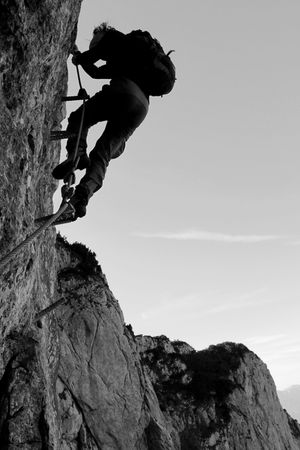Introduction to Chicago’s Urban Hiking Scene
Chicago may be renowned for its towering skyscrapers and vibrant city life, but just beyond the bustling streets lies a thriving urban hiking culture that offers locals a refreshing escape. Embracing both the perks and unique challenges of urban hiking, residents have discovered that exploring nature doesn’t always require venturing far from home. The city’s diverse trails wind through scenic parks, forest preserves, and lakeshores, creating a bridge between metropolitan energy and natural tranquility. Unlike traditional hiking in remote areas, urban hiking around Chicago means adapting to changing weather, navigating mixed-use paths, and sharing space with cyclists and joggers—yet these very elements add to the city’s distinctive outdoor experience. For many Chicagoans, these green corridors provide not just recreation, but a vital respite from concrete landscapes, offering opportunities to recharge, socialize, and appreciate the city’s hidden natural gems. Below is an overview highlighting what makes Chicago’s urban hiking culture stand out:
Urban Hiking Perks |
Unique Challenges |
Why Locals Love It |
|---|---|---|
| Accessible trails near neighborhoods | Variable weather conditions | Quick escapes from daily grind |
| Diverse scenery: lakefronts & woodlands | Shared use with bikers/runners | Community connections on the trail |
| Year-round recreational options | Noise from nearby city traffic | Discovering local wildlife & plants |
Whether you’re a seasoned hiker or simply looking for a break from the city buzz, Chicago’s urban hiking scene offers countless ways to reconnect with nature—without ever leaving the metro area.
Exploring Forest Preserves: Nature Within Reach
For Chicagoans seeking a quick escape from the city’s hustle, the region’s extensive forest preserves offer a breath of fresh air and some of the best hiking experiences near the urban core. The Forest Preserves of Cook County, spanning over 70,000 acres, provide a network of scenic trails perfect for hikers of all levels. Whether you’re craving a leisurely nature stroll or a challenging trek through woodlands and wetlands, there’s something for everyone just a short drive from downtown.
Top Forest Preserves Near Chicago
| Forest Preserve | Location | Trail Highlights | Difficulty Level |
|---|---|---|---|
| Palos Trail System | Willow Springs, IL | Lakes, ravines, hills; over 50 miles of interconnected trails | Easy to Moderate |
| Busse Woods (Ned Brown Preserve) | Elk Grove Village, IL | Paved loop around lakes, wildlife viewing | Easy |
| Deer Grove Forest Preserve | Palatine, IL | Mature forests, rolling terrain, birdwatching opportunities | Easy to Moderate |
| Sag Valley Trails | Lemont, IL | Diverse landscape with prairies and woodlands, less crowded paths | Moderate |
What Hikers Can Expect:
- Diverse Terrain: From dense woods to tranquil wetlands and open prairies, each preserve offers unique ecosystems to explore.
- Wildlife Encounters: Keep an eye out for deer, migratory birds, foxes, and even turtles along the quieter stretches.
- User-Friendly Trails: Many trails are well-marked and maintained year-round—perfect for families and beginners as well as seasoned hikers.
- Amenities: Most preserves feature ample parking lots, restrooms at trailheads, picnic areas, and posted maps for easy navigation.
- Seasonal Beauty: Spring wildflowers, summer greenery, fall foliage, and even winter snowshoeing create distinct reasons to visit throughout the year.
Local Tips for Urban Hikers:
- Arrive early on weekends to snag parking spots—popular preserves fill up fast during peak hours.
- Check weather conditions before heading out; some trails can get muddy after rain.
- If you’re new to hiking in Chicagoland’s preserves, start with the paved loops before venturing onto more rugged paths.
- Bicycles are allowed on many multi-use trails but be mindful of shared spaces with hikers and runners.
- No matter where you go, always pack water and bug spray—Midwest summers can be humid and buggy!

3. Lakefront Trails and Skyline Views
Chicago’s iconic lakeshore isn’t just for summer strolls or weekend sunbathing—it’s also a haven for urban hikers seeking breathtaking city-meets-nature experiences. The Lakefront Trail, stretching 18 miles along Lake Michigan, is the crown jewel of Chicago’s outdoor scene, seamlessly blending panoramic skyline vistas with peaceful waterfront scenery. Whether you’re an early morning jogger or a sunset stroller, the trail offers something for everyone.
Locals love to explore different sections of the trail, each offering its own unique charm. Here’s a snapshot of some popular stretches:
Trail Section |
Highlights |
Best For |
|---|---|---|
Navy Pier to Oak Street Beach |
Sweeping city views, public art, bustling atmosphere | First-time visitors, iconic skyline photos |
Montrose Beach to Foster Avenue |
Lush parks, birdwatching hotspots, dog-friendly areas | Nature lovers, families, pet owners |
Jackson Park to Promontory Point |
Historic landmarks, quiet spots, views of downtown from afar | History buffs, picnics, peaceful escapes |
Besides the main Lakefront Trail, locals also recommend checking out lesser-known gems like the Burnham Park Trail, winding past gardens and harbors, or the South Shore Nature Sanctuary, where prairie grasses sway with lake breezes. No matter which path you choose, these trails offer Chicagoans a quick retreat into nature without ever leaving sight of their city’s legendary skyline—a true urban escape that’s as beloved as deep-dish pizza and summer street festivals.
4. Hidden Gems: Lesser-Known Trails Near Chicago
While Chicago’s popular trails like the Lakefront Trail and Morton Arboretum draw plenty of outdoor enthusiasts, the city and its surrounding areas are also home to some underrated hiking spots that offer tranquility and a sense of discovery. If you’re looking to escape the crowds and enjoy a more peaceful adventure, these lesser-known trails are perfect for you.
Underrated Trails Worth Exploring
| Trail Name | Location | Distance from Downtown | Highlights |
|---|---|---|---|
| Waterfall Glen Forest Preserve | Darien, IL | ~25 miles | Cascading waterfalls, rolling terrain, wildlife spotting |
| Sag Valley Yellow Trail | Lemont, IL | ~22 miles | Dense forests, scenic overlooks, quiet atmosphere |
| Moraine Hills State Park | McHenry, IL | ~50 miles | Lakeside paths, diverse birdlife, glacial landscapes |
| Cap Sauers Holding Nature Preserve | Palisades, IL | ~23 miles | Wetlands, wildflowers, rarely crowded trails |
Why Choose These Trails?
If you value solitude and unspoiled scenery, these hidden gems provide an opportunity to reconnect with nature without straying far from the city. Most of these trails are tucked away in forest preserves or state parks where you can spot local wildlife, admire native plants, and unwind in a serene setting. Unlike heavily trafficked urban parks, these locations let you immerse yourself in the peaceful side of Chicagoland’s outdoors.
Tips for Enjoying Off-the-Beaten-Path Hikes
- Bring a trail map or use a GPS app—some less-traveled paths may not be well-marked.
- Pack out all trash and respect nature preserves’ rules to keep these areas pristine.
- If you’re new to these spots, consider hiking with a friend or letting someone know your plans.
A Quiet Alternative for Urban Explorers
The Chicagoland area is full of surprises for those willing to venture beyond the usual hotspots. Whether you’re seeking solitude or simply want to experience something new, these lesser-known trails are ideal for urban explorers wanting to trade city noise for birdsong and rustling leaves.
5. Seasonal Adventures and Trail Conditions
Chicago’s hiking scene transforms dramatically with the seasons, offering unique experiences year-round. Understanding what each season brings and how to prepare is key for a safe and enjoyable adventure near the Windy City.
Best Times of Year for Hiking
| Season | Highlights | Preparation Tips |
|---|---|---|
| Spring (March-May) | Blooming wildflowers, rising rivers, cooler temps | Wear waterproof boots; check trail conditions for mud or flooding |
| Summer (June-August) | Lush greenery, longer daylight, busy trails | Bring sunscreen, insect repellent, plenty of water; hike early to avoid heat |
| Fall (September-November) | Spectacular foliage, crisp air, fewer bugs | Layer clothing for temperature swings; watch for slippery leaves |
| Winter (December-February) | Serene snowscapes, peaceful solitude | Dress in thermal layers; wear traction devices on icy paths; monitor weather alerts |
Preparing for Midwest Weather
The Midwest’s weather is famously unpredictable. Always check the forecast before heading out and be prepared for sudden changes—especially in spring and fall. Summer thunderstorms can roll in quickly, while winter winds off Lake Michigan make temperatures feel colder than they are. Carry extra layers, rain gear, and enough water no matter the season. If you’re unfamiliar with Midwest weather patterns, keep an eye on local advisories and never hesitate to turn back if conditions become unsafe.
Pro Tip:
If you’re planning a day trip from Chicago, pack a small backpack with essentials: snacks, a first aid kit, a map or GPS device, and your phone fully charged. Local parks often have visitor centers that can provide up-to-date info on trail conditions.
6. Hiking Essentials and Chicago-Style Trail Etiquette
When heading out to explore the urban hiking trails near Chicago, being prepared ensures a safe and enjoyable experience. In the Midwest, weather can be unpredictable, and city-adjacent trails often attract a diverse mix of visitors, from families to seasoned hikers and cyclists. Here’s what you need to know before lacing up your boots:
Recommended Gear for Chicago-Area Hikes
| Essential Item | Why It Matters in Chicagoland |
|---|---|
| Sturdy Walking Shoes or Boots | Muddy paths and paved trails are common; support is key. |
| Weather-Appropriate Layers | Chicago weather can shift quickly—bring rain jackets and light fleeces. |
| Reusable Water Bottle | Stay hydrated, especially on sunny Lakefront or prairie trails. |
| Sunscreen & Bug Spray | Protection from open sun exposure and summer mosquitoes is a must. |
| Trail Map or Phone App (charged) | Many urban parks have intricate trail networks; stay oriented. |
| Snacks or Energy Bars | Easily packable nutrition for longer walks or when exploring forest preserves. |
Safety Tips for Urban Hikers
- Let someone know your route and expected return time.
- Stick to marked paths, especially in unfamiliar neighborhoods or large preserves.
- Carry ID and be aware of public transportation options if you wander far from your starting point.
- If hiking solo, consider midday hours when trails are busier and safer.
Chicago-Style Trail Etiquette & Leave No Trace Principles
Mindful Use of Shared Trails
- Yield Appropriately: Bikers yield to pedestrians; always announce when passing (“On your left!” is standard in Chicago).
- Share the Space: Many trails double as bike paths—walk single file when busy, keep pets leashed, and use headphones at low volume.
- Pace Yourself: Fast walkers should pass on the left and avoid blocking the path at scenic overlooks or rest stops.
Leave No Trace in Urban Environments
- Pack It In, Pack It Out: Even though trash cans are common, always carry out what you bring—including food wrappers and water bottles.
- Avoid Picking Flowers or Disturbing Wildlife: Native plants help preserve local ecosystems within city green spaces.
- Respect Local Art & Installations: Many urban trails feature murals or sculptures—admire without climbing or marking them.
- Tread Lightly: Stay on designated paths to prevent erosion and protect habitat restoration efforts in parks like the Morton Arboretum or Lincoln Park.
Navigating Chicago’s urban escapes means blending classic hiking wisdom with city-specific etiquette. By being prepared and respectful, you’ll help keep these trails welcoming for everyone while enjoying some of the best nature Chicagoland has to offer!
7. Planning Your Urban Escape: Resources and Community
Getting out on the trail is even more rewarding when you have the right resources and a supportive community to guide you. Whether youre a seasoned hiker or just starting out, Chicago offers plenty of ways to connect with fellow outdoor enthusiasts, find new trails, and make every urban escape memorable. Here’s how you can get started:
Local Hiking Groups
- Chicago Hiking Meetup: A diverse group that organizes hikes of all levels in and around the city. Great for making friends and finding trail buddies.
- The Chicago Hiking & Outdoors Group: Focuses on both local parks and regional adventures, welcoming hikers of all experience levels.
- Sierra Club Illinois Chapter: Hosts frequent outings and advocates for conservation, offering guided hikes and educational events.
Essential Apps for Trail Discovery
| App Name | Features | Availability |
|---|---|---|
| AllTrails | User reviews, trail maps, GPS tracking, photos | iOS/Android/Web |
| Hiking Project | Detailed route info, difficulty ratings, offline maps | iOS/Android/Web |
| Komoot | Turn-by-turn navigation, custom route planning | iOS/Android/Web |
| REI Co-op National Parks Guide | Parks-focused trails, expert tips, offline access | iOS/Android |
Websites & Local Resources for Chicagoans
- Forest Preserves of Cook County: Official site for Chicago-area nature preserves, with maps, event calendars, and volunteer opportunities.
- Chicago Park District: Find urban trails, fitness events, and park updates across the city.
- Chicago Trail Map: Interactive digital map covering bike paths and walking routes throughout the metro area.
- Illinois State Parks: Information on state parks near Chicago for longer day hikes or weekend escapes.
Connect & Share Your Adventures
The best part about hiking near Chicago is joining a vibrant community that shares your passion for the outdoors. Many groups host social events, clean-up days, or themed hikes—perfect opportunities to meet new people while enjoying fresh air. Don’t forget to share your favorite trails and photos on social media using hashtags like #ChicagoHikes, #UrbanEscapesChi, or #MidwestOutdoors.
Your Next Step: Get Out There!
No matter your experience level or where you live in the city, there’s a trail waiting for you. Use these resources to plan your next urban escape—and maybe invite some friends along for the adventure!


